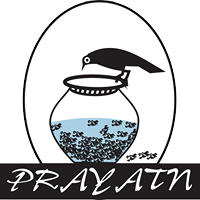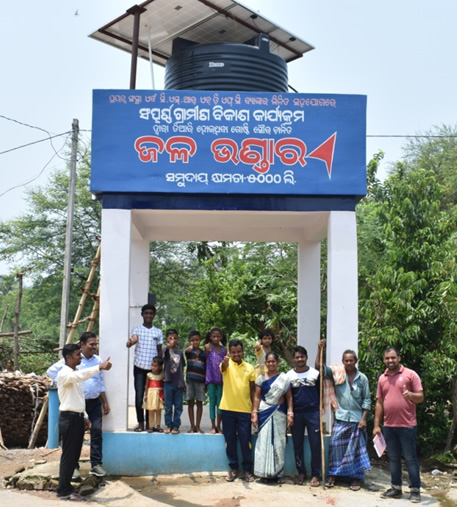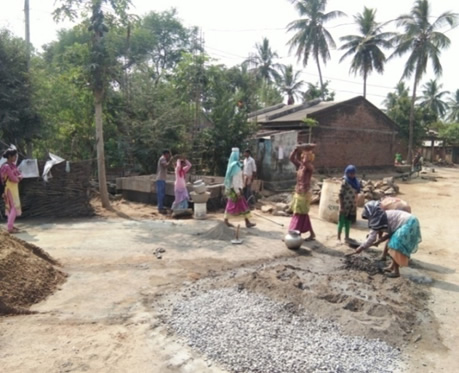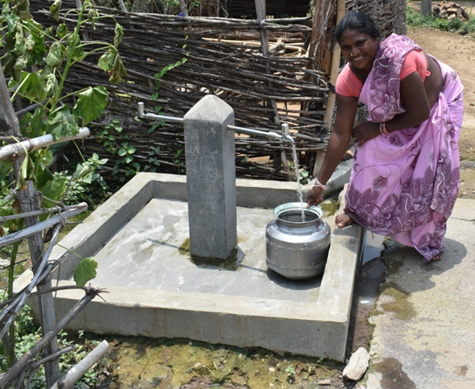Minar refers to a tower in English. But Jal Minar refers to Community overhead tank as shown in the adjoining picture which is used for storage and supply of drinking water. Construction and maintenance of Jal Minar because of the efforts of Jal Samiti, a local community based institution, has resulted in bringing smile on the faces of tribal men, women and children in Kandha Maligaon village of Odisha.
Kandha Maligaon is a small village of about 270 households and is located in Rayagada block and district of Odisha. When Prayatn team members visited the village in 2018 to understand developmental needs of the region, inadequate availability of drinking water was expressed as the biggest problem by the inhabitants who are primarily tribal. The village, which has 230 households and total population of 1440 people, has two handpumps and supply from PHED for drinking water. However, PHED supply is qualitatively unsafe while the two handpumps dry up during summer. Village women then, have to go to another village for fetching water.
In the above situation, when the formation of Village Development Committee (VDC) was facilitated by Prayatn in May 2018, the issue surfaced as the biggest problem of the villagers. The people complained that as the village is small, public authorities too do not give due attention to the village. After detailed discussion, VDC requested Prayatn to help in the construction of an overhead tank to resolve the issue permanently. The organization accepted the request but in order to ensure community ownership of the asset developed, condition of bearing a part of the cost of construction by the beneficiaries and taking full responsibility of its maintenance was kept. Development of a Jal Minar Committee was proposed for the purpose.
The VDC, after detailed discussion with the potential beneficiaries, accepted the condition and decided to pay their contribution in the form of labour. They suggested a common space near a handpump for the construction of the tank. An engineer was involved to prepare detailed drawing and estimate of the cost which included material as well as labour cost. Installation of solar pump as well as plumbing and masonry work for placing tap platforms at three different locations in the village was included in the plan so that drudgery of women in taking water to their houses could be reduced. The details were discussed with the committee and when the members agreed, they were asked to take permission from the Gram Panchayat for the purpose.
Once the permission was granted, the construction work got started. The Jal Minar Committee was formed and plan for ensuring labour contribution by each beneficiary as well as monitoring of the entire construction work was developed and followed. A platform was also developed under the overhead tank where community members could hold meetings.
Once the Jal Minar was constructed, the Jal Minar committee developed indigenous do’s and don’ts so that judicious use of the resource is ensured and no water is wasted. They decided timing for the use, divided responsibility of maintenance amongst them and fixed up monthly rent from the beneficiaries for ensuring availability of money for regular maintenance and repairs as per need. They also decided charges that they will levy if any other person, who is not part of the initial committee, wants to become a beneficiary later. With the development of the indigenous systems and mechanisms, all community members have access to drinking water in regular manner, even during the dry season. Incidence of diseases like jaundice, skin infections, etc., has reduced. The development has helped in improving situation of education of girls as well in the village because they are no more required to miss their class to go to fetch water from the nearby village.




